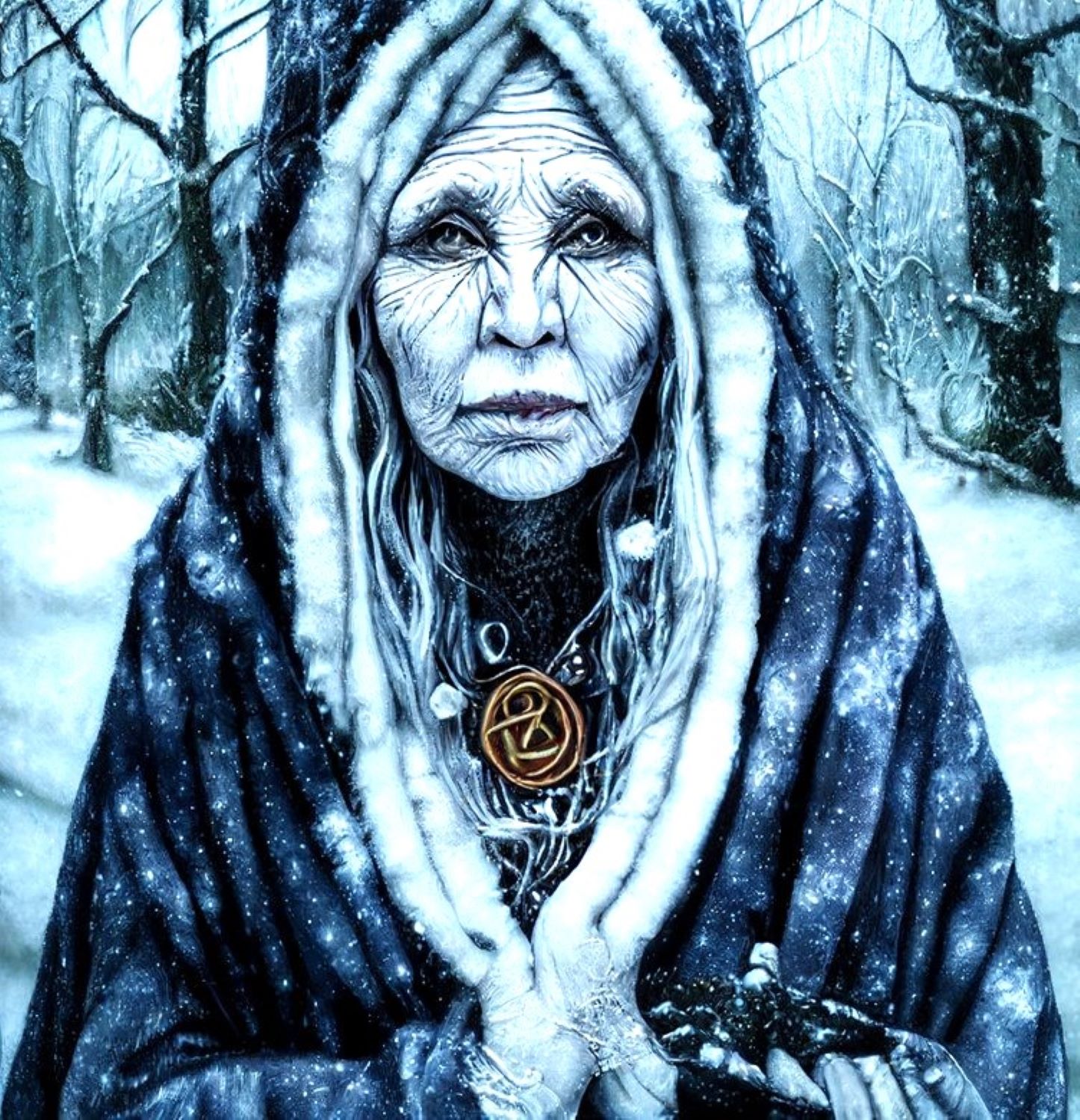
There is a change in the air, as the cold and quiet settles in. The leaves on the trees have long fallen, swapped-out for icicles and freshly fallen snow. Amid the screaming of the winter wind is the soft murmur of voices.
It is a family – a mother, a father, and a young son. They are lost and cold, desperately searching for warmth. The child is in his mother’s arms, wrapped tightly in a blanket, as the father leads the way with a small lantern.
“Who’s that?” calls the mother, her voice muffled.
In the distance they see a woman. She is old – her face is wrinkled and tired – but the most striking thing about her is her skin, so pale it is almost blue, and her eyes, striking even in the distance. Draped over her body and covering her long white hair is a dark grey cloak. In her hand she carries a staff. It is not long before the family realizes that it is Cailleach, the Celtic Goddess of Winter.
The story of Cailleach is far reaching and vast; as a character, she shows up in stories, poems, and histories around the world. And, although she is deeply tied to Celtic culture (the name itself is derived from the old Gaelic word “cailech” – meaning old woman and hag), there is evidence that her worship pre-dates the Celts. Today, however, her story is most associated with Ireland, Scotland, and Isle of Mann.
The Cailleach goes by many other names, the most common of them being the Veiled One.
But she is also known as the Queen of Winter, the Hag of Winter and, on the Isle of Man, Caillagh ny Groamagh – meaning old sullen woman.

While the monikers may vary, her roles are similar; first, she is the bringer of winter. This is perhaps her most popular characteristic, as she is known most for bringing the cold and dark winter months at Samhain, an ancient Celtic pagan festival that signals the end of both summer and the harvest season.
The Cailleach is also known as a weather witch. There is an array of ways in which she affects or controls the weather, the most blatant being the bringing of winter. However, she is also known for creating violent storms, thunder, and wind.
In many stories it is also said that she is responsible for the layout of landscapes, including mountains and large hills.
Lastly, she is known as both a goddess of destruction and, simultaneously, creation. In many stories she is associated with death and is sometimes said to gather the souls of the dead. In these tales, the Cailleach, now a one-eyed crone, flies through the skies during the Winter Solstice. However, as a guardian during the winter months, no life would survive the long and harsh cold. In this regard, she is most notably aligned with wild animals, including wolves, boars, and deer.
One of the more vibrant versions of the story comes from the Irish tradition, which sees the Cailleach as a triple goddess – a concept that is not uncommon in other cultures. The triple goddess is related to the three stages that were, at one time, considered the main phases of a woman’s life: maiden, mother, and crone. Often, she will appear as a maiden to signify youth and new beginnings, or as a mother to suggest creation and fertility, and finally, as a crone, denoting both wisdom and transformation.
With a history as dark and wild as the winter itself, the Cailleach’s presence remains strong today. Alas, the next time you are out in the cold, listening to the whistle of the wind and feeling the cold pinch at your skin, take a look around. You might just see her.




















Leave a Comment